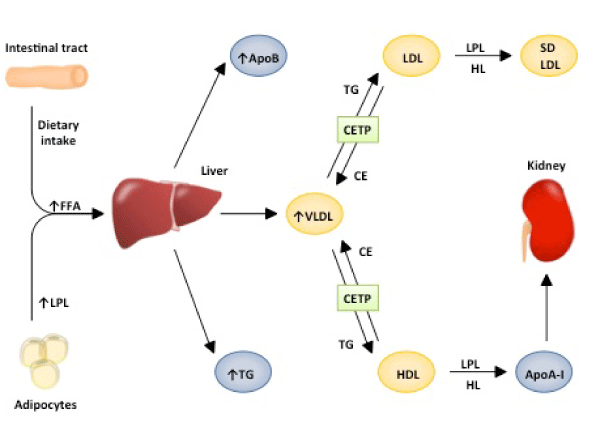
 |
| Figure 1: Pathophysiology of diabetic dyslipidemia. Insulin resistance leads to the characteristic triad of high small dense low-density lipoprotein (LDL) level, high triglyceride level, and low high-density lipoprotein (HDL) cholesterol level. In a normal physiologic state, insulin suppresses lipolysis from adipose tissue and hepatic production of very low-density lipoprotein (VLDL) and apolipoprotein B (apoB). However, insulin resistance and hyperinsulinemia in the post-prandial state results in an increased level of VLDL-transported triglyceride, which promotes the transfer of HDL cholesteryl ester and LDL cholesterylester via cholesteryl ester transfer protein (CETP). The triglyceriderich HDL or LDL then undergo hydrolysis by lipoprotein lipase or hepatic lipase, resulting in the production of smaller, denser particles. In addition, the smaller HDL particles are more readily catabolized, resulting in low HDL levels. Abbreviations: ApoA-I, apolipoprotein A-I; ApoB, apolipoprotein B; CE, cholesteryl ester; CETP, cholesteryl ester transfer protein;FFA free fatty acid; HL, hepatic lipase;LPL, lipoprotein lipase; SD LDL, small dense LDL; TG, triglyceride. |